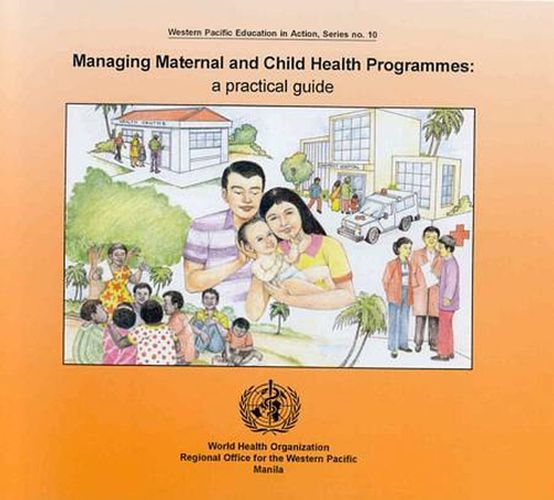Readings Newsletter
Become a Readings Member to make your shopping experience even easier.
Sign in or sign up for free!
You’re not far away from qualifying for FREE standard shipping within Australia
You’ve qualified for FREE standard shipping within Australia
The cart is loading…






Describes a wide range of simple strategies and interventions that can be used to improve the management of maternal and child health programmes in developing countries. Addressed to health officers at the district level, the manual aims to help readers think through the problems commonly responsible for poor service delivery and preventable deaths, and then find ways to solve them, even when resources are scarce. With this goal in mind, the manual draws on extensive experience, in Western Pacific countries, to provide a structured way of looking at problems, identifying their causes, and planning problem-based interventions.
Throughout the guide, checklists, charts, model planning and reporting forms, sample problems and solutions, and numerous practical examples are used to help readers acquire essential managerial and analytical skills. The importance of creative thinking and innovative solutions is repeatedly emphasized and illustrated.
The guide, which is presented in the form of a spiral-bound manual, has five chapters. The first outlines the common goals, functions, structure, and routine services of maternal and child health programmes, and explains the vital role of good management. Chapter two, on planning, provides abundant practical advice on ways to review the general health situation, set goals, identify problems and assign priorities, develop workplans, prepare budgets, and choose and sequence interventions. Chapter three shows how plans can be put into action through good organization, monitoring, and supervision. The remaining chapters offer step-by-step instructions for planning and conducting training activities, and discuss the appropriate use of various methods for evaluating the effects of specific interventions.
$9.00 standard shipping within Australia
FREE standard shipping within Australia for orders over $100.00
Express & International shipping calculated at checkout
Describes a wide range of simple strategies and interventions that can be used to improve the management of maternal and child health programmes in developing countries. Addressed to health officers at the district level, the manual aims to help readers think through the problems commonly responsible for poor service delivery and preventable deaths, and then find ways to solve them, even when resources are scarce. With this goal in mind, the manual draws on extensive experience, in Western Pacific countries, to provide a structured way of looking at problems, identifying their causes, and planning problem-based interventions.
Throughout the guide, checklists, charts, model planning and reporting forms, sample problems and solutions, and numerous practical examples are used to help readers acquire essential managerial and analytical skills. The importance of creative thinking and innovative solutions is repeatedly emphasized and illustrated.
The guide, which is presented in the form of a spiral-bound manual, has five chapters. The first outlines the common goals, functions, structure, and routine services of maternal and child health programmes, and explains the vital role of good management. Chapter two, on planning, provides abundant practical advice on ways to review the general health situation, set goals, identify problems and assign priorities, develop workplans, prepare budgets, and choose and sequence interventions. Chapter three shows how plans can be put into action through good organization, monitoring, and supervision. The remaining chapters offer step-by-step instructions for planning and conducting training activities, and discuss the appropriate use of various methods for evaluating the effects of specific interventions.